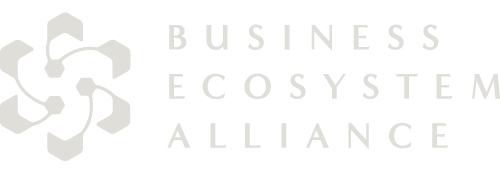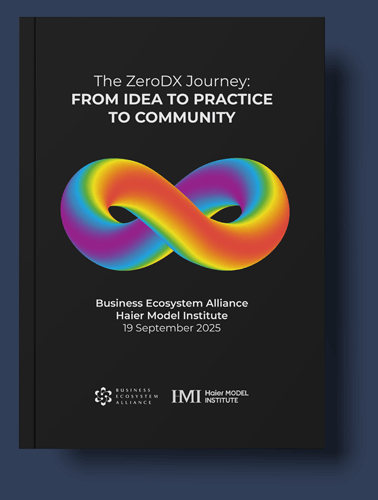Measuring corporate engagement with the startup ecosystem
Dan Toma
How do you, as a corporate leader, react when your marketplace starts drifting away from you?
Do you do nothing, hoping that customers will return once they have sampled the alternatives and realized the value of your offering? Do you instantly embark on a company-wide reset, potentially sacrificing continuity of service or product in the chase for differentiation? Or do you perhaps reach out into the ecosystem, looking to partner with another organization in order to reconnect with your customers and still stay relevant?
This rise in collaborative relationships is one reason why in 2017 the International Organisation for Standardization (ISO) released a standard for Collaborative Business Relationship Management Systems, ISO 44001. Building on the earlier 2006 PAS11000 Collaborative Business Relationships model, the ISO standard has been designed to apply to all business systems and collaborations from governmental organizations to micro businesses and from one-to-one direct relationships to multi-business relationships.
In parallel to these developments around standardization, my work focuses on understanding and answering the question of how you can measure the collaborations between your corporation and startups.
Typical corporate/startup collaborations may take one of the following forms:
- Paid and free pilots.
- Joint ventures such as new product development, market research or technology research.
- Acquisitions.
- Venturing (buying a stake in a startup).
Collaboration between two companies will never be easy, regardless of how much they need each other. The success of a collaboration depends on one hand on mutual understanding (each side appreciating the risks and the differences the other faces in embarking on collaboration) and on the other hand on thorough preparation before signing on the proverbial dotted line. And the work doesn’t stop there. Having a robust measurement system in place enables organizations to better define, manage and progress collaborative projects.
In order to better manage and measure your startup collaboration projects, it is important firstly to understand what needs to be measured at program level before applying those parameters to individual collaboration types. From experience, we encourage you to have a funnel view when analyzing your startup collaboration program(s). There are many ways to segment a funnel but let’s, for now, consider the following generic stages:
- Demand
- Live
- Outcome.

In the Demand phase of the funnel, a company can analyze the extent to which the startups in the ecosystem are actively looking to collaborate with the company and vice-versa.
The Live phase of the funnel measures ongoing collaborations. This gives organizations on both sides a snapshot of ongoing progress as well as an indication of future outcomes.
The Outcome phase of the funnel consists of tracking the impact completed collaborations had on the company.
Now let’s look in more detail at the demand, live and outcome phases for each of the collaboration types mentioned above and highlight some indicators that can be tracked for each respective phase.
Paid and free pilots
Demand phase. For this type of collaboration and this phase of the collaboration funnel, it is advisable for the company to track the following performance indicators:
- Number of requests received for either of these two types of collaborations per unit of time.
- Number of requests sent for either of these two types of collaborations per unit of time.
- Average cost of attracting one demo; this might include the travel budget of the startup collaboration team or certain event sponsorships.
Live phase. For this type of collaboration and this phase of the collaboration funnel, it is advisable for the company to track the following performance indicators:
- Percentage of initiated demos from total proposed (for added clarity this should be ideally computed separately for each type of demo).
- Invested capital per unit of time (for paid demos).
- Average invested capital per unit of time (for paid demos).
- Invested resources in a unit of time for either of these two types of collaborations (e.g. time investments).
- Average invested resources per unit of time for either of these two types of collaborations.
- Progress in accordance with a pre-agreed roadmap.
- Progress towards pre-defined goals.
Outcome phase. For this type of collaboration and this phase of the collaboration funnel, it is advisable for the company to track the following result indicators:
- Percentage of completed pilots from the total initiated.
- Average cost of completing one demo, including both the Demand phase cost and the Live phase cost per unit of time.
- Collaboration specific outcome which will most likely vary from demo to demo but they should be mutually agreed upon at the beginning of each (e.g. if the collaboration was geared towards lowering the onboarding of new clients on a certain corporate developed solution through the deployment of a startup owned technology, then the result indicator that needs to be tracked is onboarding time reduction; other examples might include cost savings, or new revenue).
- Average time to outcome.
Joint ventures
Demand phase. For this type of collaboration and this phase of the collaboration funnel, it is advisable for the company to track the following performance indicators:
- Number of requests received for joint ventures per unit of time.
- Number of requests sent for joint ventures per unit of time.
- Average cost of attracting one joint venture proposal per unit of time (this might include the travel budget of the startup collaboration team or certain event sponsorships).
Live phase. For this type of collaboration and this phase of the collaboration funnel, it is advisable for the company to track the following performance indicators:
- Number of projects initiated per unit of time.
- Percentage of projects initiated from total received and sent per unit of time.
- If applicable (e.g. product development), progress of specific indicators.
- Invested capital per unit of time.
- Average invested capital per unit of time.
- Invested resources per unit of time (e.g. time investments).
- Average invested resources per unit of time.
- Progress in accordance with a pre-agreed roadmap of the joint venture.
- Progress towards pre-defined goals.
Outcome phase. For this type of collaboration and this phase of the collaboration funnel, it is advisable for the company to track the following result indicator:
- Average cost of completing one joint venture, including both the Demand phase cost and the Live phase cost, per unit of time.
- Collaboration specific outcomes which will most likely vary from joint venture to joint venture but they should be mutually agreed upon at the beginning of each demo (e.g. new revenue from products co-developed, dollars spent per insight obtained in the case of technology research etc).
- Average time to outcome.
Acquisitions
Demand phase. For this type of collaboration and this phase of the collaboration funnel, it is advisable for the company to track the following performance indicators:
- Number of requests sent for acquisitions per unit of time.
- Average cost of scouting one possible acquisition candidate per unit of time (this might include costs associated with due diligence etc.).
Live phase. For this type of collaboration and this phase of the collaboration funnel, it is advisable for the company to track the following performance indicators:
- Number of initiated acquisitions per unit of time.
- Percentage of initiated acquisitions from the total sent per unit of time.
- Total invested capital per unit of time.
- Progress in accordance with a pre-agreed roadmap of the joint venture.
- Progress towards pre-defined goals.
Outcome phase. For this type of collaboration and this phase of the collaboration funnel, it is advisable for the company to track the following result indicator:
- Average cost of acquiring a startup, including both the Demand phase cost and the Live phase, cost per unit of time.
- New revenue generated per unit of time as a result of acquisition made.
- New revenue to cost ratio (total cost of acquisition the internal costs such as salaries of the responsible people) per unit of time.
- Assets appreciation per unit of time.
- Assets appreciation to cost ratio (total cost of acquisition the internal costs such as salaries of the responsible people) per unit of time.
- Collaboration specific outcomes which will most likely vary from acquisition to acquisition but they should be agreed upon when the acquisition is (e.g. market capitalization etc.).
Venturing
Demand phase. For this type of collaboration and this phase of the collaboration funnel, it is advisable for the company to track the following performance indicators:
- Number of requests received for venturing per unit of time.
- Number of requests sent for venturing per unit of time
- Average cost of attracting one possible venture candidate per unit of time (this might include the travel budget of the startup collaboration team to certain hubs such as Berlin or San Francisco or certain event sponsorships).
Live phase. For this type of collaboration and this phase of the collaboration funnel, it is advisable for the company to track the following performance indicators:
- Number of initiated investments per unit of time.
- Percentage of initiated investments from the total requests received and sent per unit of time.
- Total invested capital per unit of time.
- Average ticket size (investment) per unit of time.
- Average stake taken in ventures per unit of time.
- Progress in accordance with a pre-agreed roadmap of the joint venture.
- Progress towards pre-defined goals.
Outcome phase. For this type of collaboration and this phase of the collaboration funnel, it is advisable for the company to track the following result indicator:
- Average cost of taking a stake in a startup including both the Demand phase cost and the Live phase cost per unit of time.
- New revenue generated per unit of time as a result of investment made.
- New revenue to cost ratio (total cost of venturing the internal costs such as salaries of the responsible people) per unit of time.
- Assets appreciation per unit of time.
- Assets appreciation to cost ratio (total cost of venturing the internal costs such as salaries of the responsible people) per unit of time.
- Collaboration specific outcomes which will most likely vary from venture to venture but they should be mutually agreed upon at the beginning of each collaboration (e.g. market capitalization etc. ).
Measuring the engagement your company has with the startup ecosystem will add much needed clarity and transparency to the collaboration effort, showing you exactly which type of collaboration is the most effective, where you need to double down and where it is wiser to remove investment from. This in turn will help build a positive attitude across your business towards collaboration initiatives.
Dan Toma is an innovation thought leader and the co-author of the award winning book The Corporate Startup. He started his career in entrepreneurship, being involved with technology startups across the world. His work focuses on enterprise transformation -- specifically on the changes blue-chip organizations need to make to allow for new ventures to be built in a corporate setting. He was featured on the Thinkers50 2020 Radar list of management thinkers to watch and is a member of the World Economic Forum’s working group on accelerating digital transformation.
This article is an extract from Innovation Accounting (co-authored with Esther Gons, published by BIS, 2021) which provides tools, frameworks, templates, and visualizations that can be easily understood and applied to measure innovation. More information can be found at www.innovationaccountingbook.com


